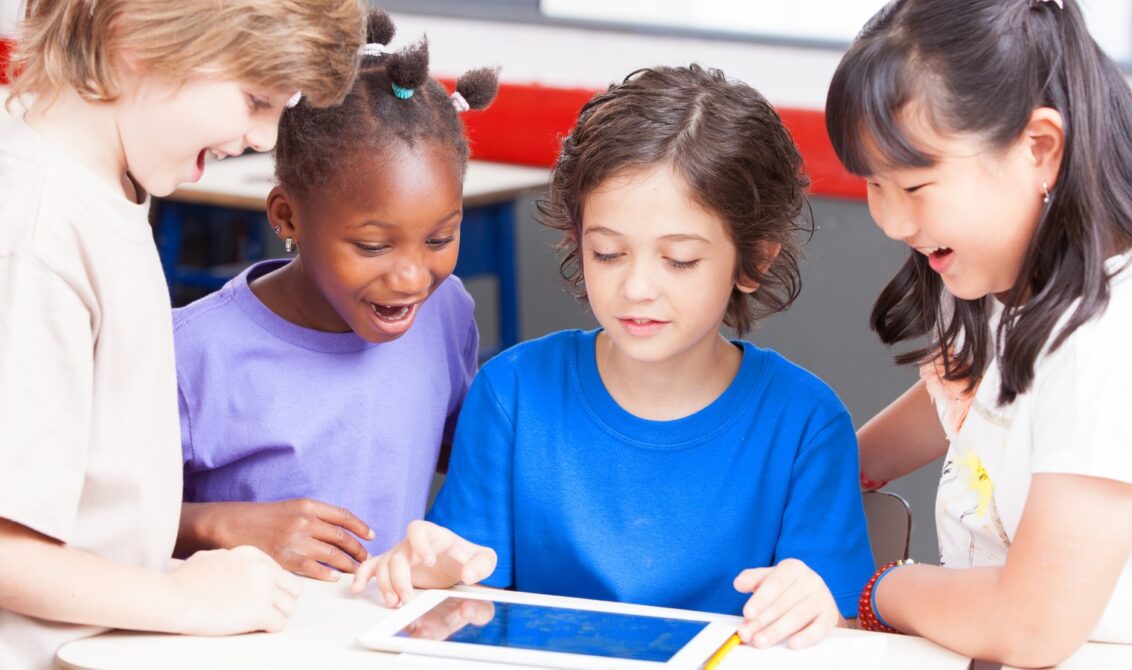
Life skills go hand in hand with a child’s development, promoting healthy living and healthy minds. Incorporating life skills into the classroom enables students to reach their highest potential and interact positively with their environment.
What are life skills?
To start us off, let’s see how the World Health Organization defines life skills:
‘Life skills are psychosocial competencies and interpersonal skills that help people make informed decisions, solve problems, think critically and creatively, communicate effectively, build healthy relationships, empathise with others, and cope with managing their lives in a healthy and productive manner.’
Teaching life skills in primary school
When should children start learning life skills? Of course, the earlier the better! While a certain amount of this education will take place at home, school can also provide a safe and trusted environment where children can learn and practise life skills. Teaching and nurturing life skills from a young age gives students the best chance of personal, academic and professional success in the future.
A good starting point is to explain and discuss the concept of life skills and how they’re relevant to our daily lives. This way, students understand the importance of the skills they’re learning.
It’s also beneficial to model the life skills for your students, and recognise and praise students when you see them using these skills in class.
7 life skills for students
Here are 7 life skills that you can start practising in class with your students.
1. Communication and interaction
Developing strong communication skills will help children form healthy relationships and resolve conflict better. This can involve reading social cues and listening attentively, as well as thinking about their message and the most appropriate way to express it. It is undoubtedly one of the most critical life skills for students to practise.
So, what are the best ways to practise communication skills in class?
Conversations with an attentive adult can help to build communication skills. It would be beneficial to spend some distraction-free time listening and responding to students, modelling turn-taking and social cues.
Group projects and collaborative activities can enhance children’s communication skills, such as class debates in which students alternate sharing their opinions and ideas.
2. Focus and self-control
Routines can create a feeling of security and help children learn focus and self-control. In the classroom, start-of-day and end-of-day routines let your students know what to expect. An organised and tidy space helps them to know where to put their belongings and find things they need. Plus, it’s always easier to focus when a space is organised.
Self-control can be practised during games and activities, like learning how to wait their turn and share things with each other.
3. Emotional regulation
Modelling and sharing your own strategies for managing emotions is an effective way to encourage students to do the same. This creates an environment where children feel safe to express their emotions and where different feelings are respected.
Emotions check-in: A great way to start class mindfully is with an emotions check-in. This could be done with ‘how I feel today’ cards, openly or privately, so that students can take a moment to notice how they’re feeling.
You could explore emotions by asking students what makes them, or people they know, feel happy, excited, frustrated or impatient. For challenging emotions, encourage them to think of solutions and ways to calm down. You might like to discuss tactics like deep breathing, taking time alone or changing to a different activity.
Calm-down zone: A calm-down zone in the classroom can provide a change of scene for students to relax, take their mind off what’s bothering them and regulate their emotions. This area could include items like fidget toys, headphones for soothing music or colouring pages.
4. Perspective-taking
Understanding the points of view of others will aid children’s daily interactions.
Books are an excellent resource to open up discussions around perspectives. You can ask students how they perceive characters’ feelings in books, with questions like ‘I wonder how he felt when…’, and ‘What do you think would make him feel better?’. This is an effective way to discuss parallel emotions that children might experience.
Role-playing activities can also help children to understand situations from different viewpoints. By taking on the roles of different characters, students consider how that character might feel and respond. For younger students, puppets can be fun and useful for this. Pictures, videos and class debates can also serve to encourage perspective-taking.
5. Critical thinking
Developing critical thinking helps children to analyse information, make comparisons and draw conclusions.
Asking open-ended questions can help to develop critical thinking. In class, encourage students to take risks, make mistakes, and try out new and different ideas to solve problems.
Problem-solving activities and projects provoke students to question and analyse, like presenting them with a scenario and asking them to come up with solutions. Games and puzzles that require students to think logically and make connections will also help them to develop their critical thinking skills while having fun, too.
6. Taking on challenges
Developing resilience – the ability to tackle challenges, recover from setbacks and keep trying – is crucial in life. Encourage students to take part in activities that are outside of their comfort zone and give positive feedback. This can help them develop a growth mindset, and become more resilient in the face of challenges.
Teamwork in class can provide opportunities for students to take on new and different roles. As a group or individually, students could analyse which challenges they enjoyed, and set some personal goals and think about how to achieve them.
You could share your own experiences of taking on challenges, setbacks you’ve faced and how you overcame them. A powerful way to encourage perseverance is to praise students for the effort they’ve put in, regardless of the outcome.
7. Self-expression
Drawing, painting, writing, journaling, music and drama are fantastic creative ways for students to express their feelings and articulate their experiences.
A project to celebrate students’ unique backgrounds and cultural identities, whilst learning about those of their classmates, is a wonderful way to explore identities and expressions together in class. It also gives you a chance to connect with students by showing things you’ve created and sharing your experiences.
Don’t forget breaktime!
Life skills aren’t just for inside the classroom. Breaktime is a great opportunity for practising many life skills, like creating games and activities, including others, sharing equipment, communicating with peers, avoiding conflict, accepting rules and participating responsibly.
What are your experiences with teaching life skills to your students? Would you add any more to our list?
Subscribe to our blog
If you’d like to stay up to date with our articles in 2023, why not subscribe to our blog? You’ll get a fortnightly roundup of the articles you’ve missed straight to your inbox, plus links to free teaching resources.

